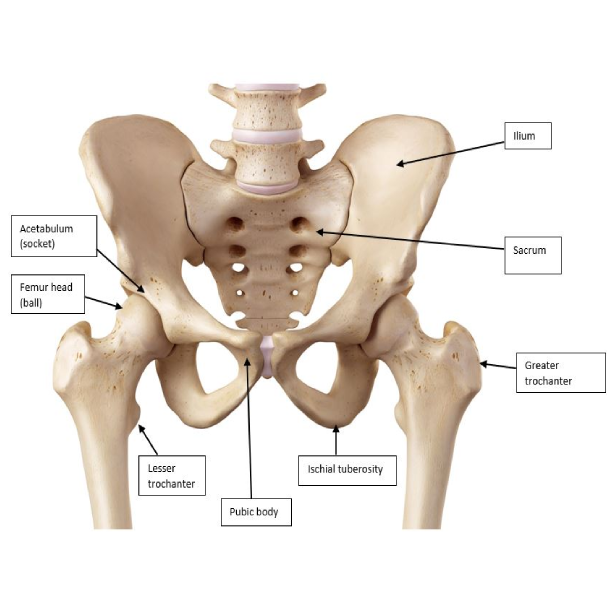Are you tired of living with hip pain that slows you down and keeps you from enjoying your favorite activities? If so, you're not alone—many people struggle with discomfort in this critical joint. But what if we told you there’s a way to reclaim your mobility without resorting to invasive procedures or heavy medications? Enter the world of chiropractic care! In this blog post, we'll explore how chiropractors can help alleviate hip pain through targeted treatments and holistic approaches. Get ready to discover the best strategies for restoring your hips' health and getting back on track to an active lifestyle!
Introduction to Hip Pain and Chiropractic Care
Hip pain can be a real game-changer. Whether you’re an athlete, a weekend warrior, or just someone who enjoys a leisurely stroll, discomfort in the hip area can put the brakes on your daily activities. Struggling to get out of bed or finding it hard to climb stairs? You’re not alone. Many people experience hip pain at some point in their lives. While there are various approaches to managing this issue, chiropractic care has emerged as a compelling option for relief and recovery. Chiropractors focus on aligning your body’s structure and promoting natural healing processes without invasive procedures or pharmaceuticals. If you're looking for effective treatments that address both symptoms and underlying causes of hip pain, understanding how chiropractic care fits into the picture could be key to regaining your mobility and comfort. Let’s dive deeper into what makes chiropractic treatment so beneficial for those suffering from hip issues.
Understanding the Causes of Hip Pain
Hip pain can stem from various sources, making it essential to understand its underlying causes. Injuries are common culprits. Strains or sprains from falls, sports, or everyday activities can lead to discomfort. Overuse injuries also develop when the hip is pushed beyond its limits. Arthritis stands out as another significant factor. Osteoarthritis and rheumatoid arthritis can wear down cartilage, causing inflammation and pain in the joint. Other conditions like bursitis or tendinitis contribute too. These involve irritation of the cushioning sacs or tendons around the hip joint. Structural issues may play a role as well. Hip dysplasia or labral tears affect how your joints function, leading to persistent soreness. Even lifestyle factors matter—obesity places extra stress on hips while poor posture during daily routines can exacerbate existing problems. Understanding these diverse causes is crucial for effective treatment strategies.
The Role of a Chiropractor in Treating Hip Pain
Chiropractors play a crucial role in addressing hip pain. They focus on the spine and its relationship to overall body function. This holistic approach often helps relieve discomfort. Using various assessment techniques, chiropractors identify misalignments or restrictions that may be contributing to your pain. These adjustments help restore proper movement and alignment in the hips. Through targeted spinal manipulation, they can alleviate pressure on nerves affecting the hip region. By improving mobility, patients often experience significant relief from their symptoms. Additionally, chiropractors may incorporate other therapies like soft tissue work and stretching into treatment plans. This comprehensive strategy not only treats existing issues but also promotes long-term wellness. Education is another essential aspect of chiropractic care for hip pain. Chiropractors empower patients with knowledge about posture, movement patterns, and exercises that support recovery while preventing future problems.
Benefits of Chiropractic Care for Hip Pain
Chiropractic care offers several benefits for those suffering from hip pain. One of the primary advantages is the focus on spinal alignment and overall body mechanics. By correcting misalignments, chiropractors can help alleviate stress on the hips. Additionally, chiropractic adjustments often improve mobility. Patients frequently report increased range of motion after treatment sessions. This newfound flexibility can make daily activities more manageable. Pain relief is another significant benefit. Many individuals experience a reduction in discomfort following chiropractic interventions. This natural approach minimizes reliance on medications that may have undesirable side effects. Moreover, chiropractors provide personalized care plans tailored to individual needs. They take into account lifestyle factors and specific conditions, ensuring comprehensive treatment strategies are implemented. Finally, regular visits to a chiropractor can promote long-term health and wellness rather than just addressing symptoms as they arise. Integrating chiropractic care into your routine may lead to better overall physical function over time.
Common Techniques Used by Chiropractors for Hip Pain Relief
Chiropractors employ various techniques to alleviate hip pain effectively. One of the most common methods is spinal manipulation. This hands-on approach aims to realign the spine, improving overall function and reducing discomfort. Another technique is soft tissue therapy. By targeting muscles, tendons, and ligaments around the hip joint, chiropractors can release tension and promote healing. Therapeutic exercises are also integral to treatment plans. These targeted movements help strengthen surrounding muscles while enhancing flexibility. Some practitioners may use modalities like ultrasound or electrical stimulation to reduce inflammation and accelerate recovery. Additionally, chiropractic adjustments focused specifically on the hips can restore mobility and improve joint function. Each technique offers unique benefits tailored to individual needs, promoting a comprehensive path toward relief from hip pain.
Lifestyle Changes to Help Manage and Prevent Hip Pain
Making simple lifestyle changes can significantly impact hip pain management. Start by incorporating regular exercise into your routine. Focus on low-impact activities like swimming or cycling, which are easier on the joints. Maintaining a healthy weight is crucial as excess pounds put additional strain on your hips. A balanced diet rich in anti-inflammatory foods, such as fruits, vegetables, and whole grains, can also help reduce discomfort. Pay attention to your posture throughout daily activities. Whether sitting at a desk or lifting objects, proper alignment can prevent unnecessary tension in the hips. Stretching routines are essential too. Gentle stretching increases flexibility and reduces stiffness in the hip area. Lastly, consider investing time in relaxation techniques like yoga or meditation. These practices not only promote physical well-being but also enhance mental health, contributing to overall pain reduction.
Other Treatment Options for Hip Pain (surgery, medication)
When chiropractic care isn't enough, other treatment options for hip pain may be necessary. Medications are often the first line of defense. Nonsteroidal anti-inflammatory drugs (NSAIDs) can help alleviate pain and reduce inflammation. For more severe discomfort, doctors might prescribe stronger medications or corticosteroid injections. Surgery becomes an option when conservative treatments fail to provide relief. Procedures such as arthroscopy allow physicians to address specific issues within the hip joint, like labral tears or cartilage damage. In more advanced cases, total hip replacement may be recommended for those with significant joint deterioration. Each approach has its risks and benefits that need careful consideration. It’s essential to consult a healthcare professional who understands your unique situation before making any decisions on treatment pathways.
Finding the Right Chiropractor for Your Needs
Choosing the right chiropractor can feel overwhelming. Start by seeking recommendations from friends or family who have had positive experiences. Research potential chiropractors online. Look for reviews and testimonials that highlight their expertise and patient care. A strong online presence often indicates a commitment to quality service. Consider the chiropractor's approach to treatment. Some focus on hands-on adjustments, while others may incorporate holistic methods like nutrition advice or exercise plans. Ensure their philosophy aligns with your preferences. Don’t hesitate to schedule an initial consultation. This gives you a chance to discuss your specific needs and gauge how comfortable you feel with them. Finally, assess logistics such as location, office hours, and insurance coverage. Finding someone accessible makes regular visits easier and more manageable in your healing journey.
Conclusion: How Chiropractic Care Can Help You Find Relief from Hip Pain
Chiropractic care offers a holistic approach to managing hip pain. By focusing on the root causes and not just the symptoms, chiropractors can help restore balance and function to your body. This form of treatment emphasizes natural healing methods, which often lead to long-term relief. Through tailored adjustments, targeted therapies, and lifestyle recommendations, you can experience significant improvements in mobility and comfort. Many patients find that regular chiropractic visits not only alleviate their current pain but also prevent future issues from arising. Choosing chiropractic care means opting for a non-invasive method that prioritizes your overall wellness. If you're struggling with hip pain, exploring this option could be an important step towards reclaiming your active lifestyle. learn more here - https://hipsurgeryclinic.co.uk/






Comments